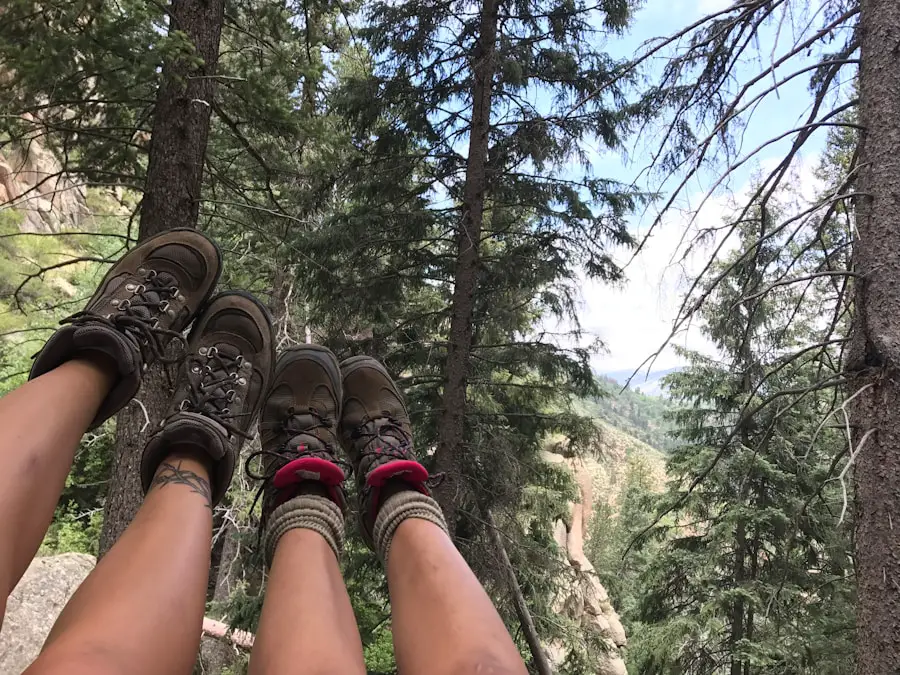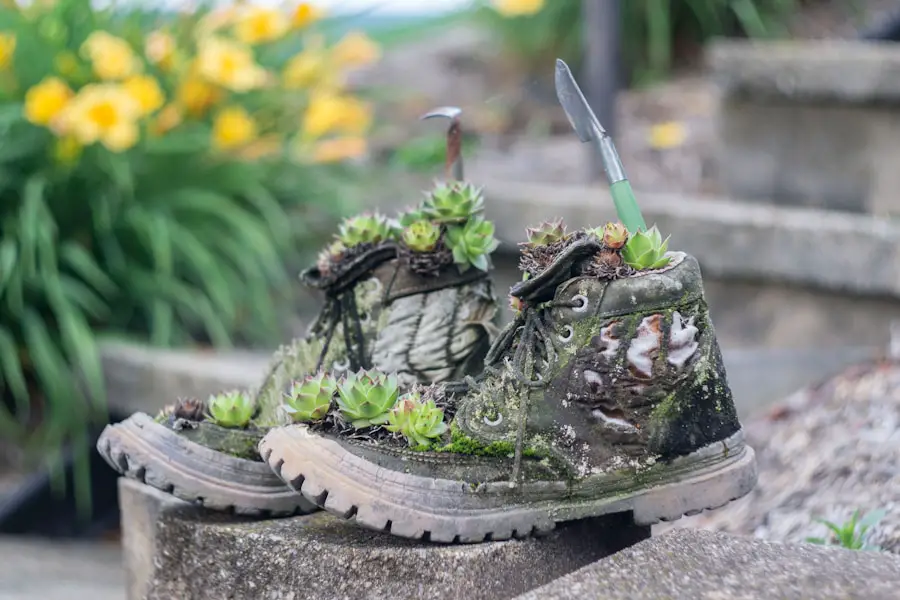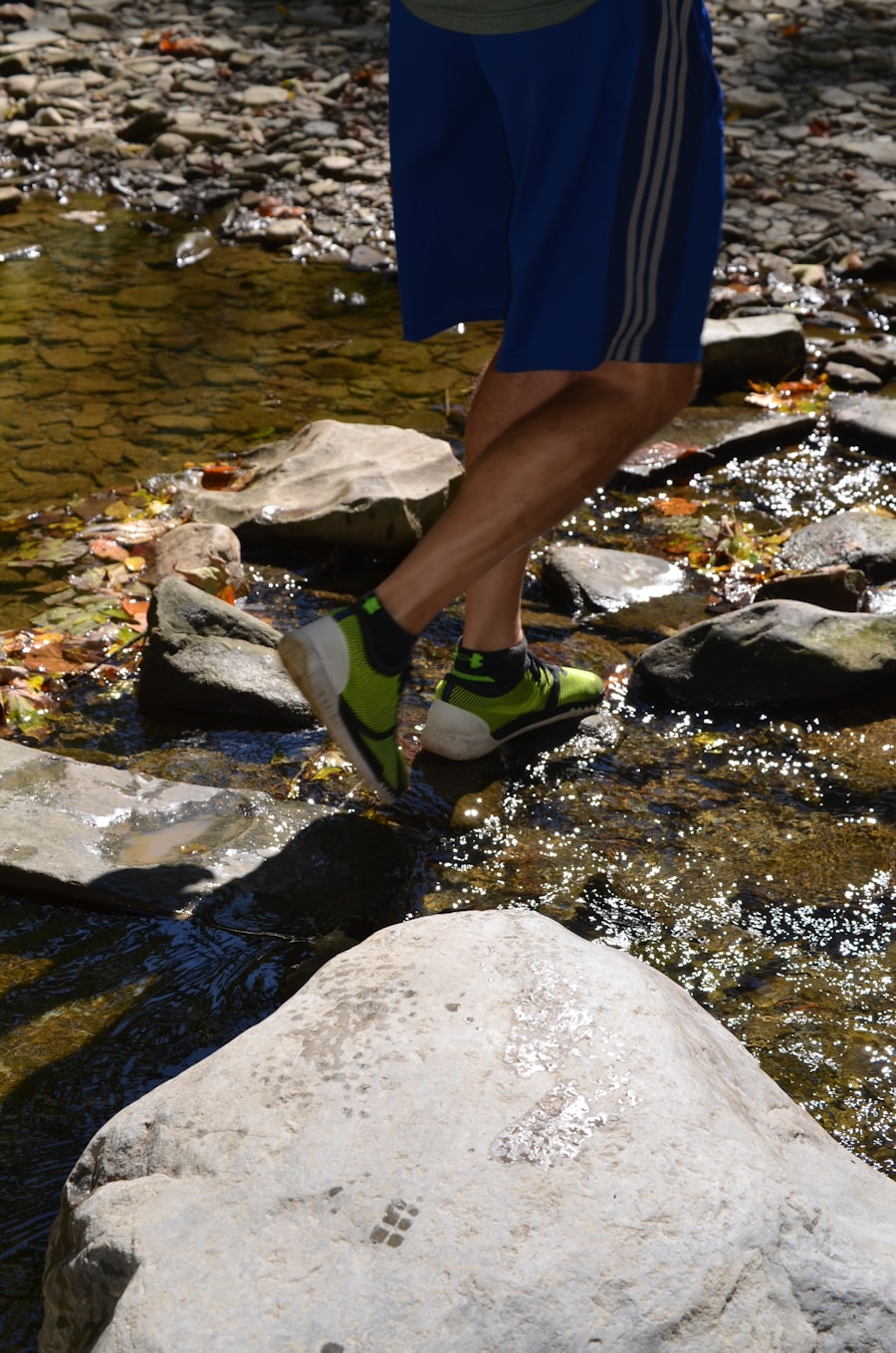In recent years, the lines between specialized footwear and everyday shoes have blurred significantly. Hiking shoes, once relegated to rugged terrains and outdoor adventures, are increasingly being embraced as viable options for daily wear. This shift can be attributed to a growing awareness of the importance of comfort and functionality in our daily lives.
As urban environments become more demanding, with their mix of concrete jungles and natural landscapes, the practicality of hiking shoes for everyday use is worth exploring. The question arises: can these sturdy, supportive shoes transition seamlessly from the trails to the streets? The appeal of hiking shoes extends beyond their primary function.
They are designed to provide stability, traction, and comfort, making them an attractive choice for those who spend long hours on their feet. As more people prioritize health and wellness, the demand for footwear that supports an active lifestyle has surged. This article delves into various aspects of hiking shoes as everyday footwear, examining their comfort, style, durability, versatility, maintenance, and cost-effectiveness.
By evaluating these factors, we can better understand whether hiking shoes are a practical choice for daily wear.
Key Takeaways
- Hiking shoes can be a practical and comfortable option for everyday wear
- Hiking shoes provide excellent support and cushioning for daily activities
- Hiking shoes can be stylish and versatile for various casual settings
- Hiking shoes are durable and can withstand daily wear for an extended period
- Hiking shoes are cost-effective for both outdoor adventures and daily use
Comfort and Support: Evaluating the practicality of hiking shoes for daily use
One of the most compelling reasons to consider hiking shoes for everyday wear is their unparalleled comfort and support. Unlike traditional sneakers or casual shoes, hiking shoes are engineered with features that cater to prolonged use in diverse environments. They often incorporate cushioned insoles, arch support, and shock-absorbing midsoles that work together to reduce fatigue during extended periods of walking or standing.
For individuals who commute on foot or spend their days navigating busy urban landscapes, this level of comfort can be a game-changer. Moreover, hiking shoes typically offer enhanced ankle support compared to standard footwear. Many models feature higher cuts that wrap around the ankle, providing stability and reducing the risk of sprains or injuries.
This is particularly beneficial for those who may encounter uneven surfaces or obstacles in their daily routines. The rugged outsoles found on hiking shoes are designed to grip various terrains, ensuring that wearers maintain traction even in wet or slippery conditions. This combination of comfort and support makes hiking shoes a practical choice for anyone seeking reliable footwear for their everyday activities.
Style and Fashion: Considering the aesthetic appeal of hiking shoes in everyday settings

While functionality is paramount when selecting footwear, style cannot be overlooked. Hiking shoes have evolved significantly in terms of design, with many brands now offering models that blend performance with aesthetic appeal. Gone are the days when hiking shoes were bulky and unattractive; contemporary designs often feature sleek lines, vibrant colors, and modern materials that can easily complement casual outfits.
Hiking shoes have become a fashion statement in their own right, offering both style and support for daily activities.
Durability and Longevity: Examining the lifespan of hiking shoes when used as everyday footwear
| Brand | Model | Material | Lifespan (months) |
|---|---|---|---|
| Merrell | Moab 2 | Leather/Synthetic | 18-24 |
| Salomon | X Ultra 3 | Synthetic | 12-18 |
| Columbia | Newton Ridge Plus II | Leather | 24-30 |
| Keen | Targhee II | Leather/Synthetic | 18-24 |
Durability is a hallmark of hiking shoes, designed to withstand the rigors of outdoor adventures. This inherent toughness translates well into everyday use, where wear and tear can quickly diminish the lifespan of conventional footwear. High-quality materials such as leather, synthetic fabrics, and reinforced stitching contribute to the longevity of hiking shoes.
When worn daily, these shoes can endure various conditions—be it rain-soaked streets or dusty trails—without compromising their structural integrity. Moreover, many hiking shoe brands offer warranties or guarantees that reflect their confidence in the product’s durability. For instance, some manufacturers provide a limited lifetime warranty on their footwear, assuring consumers that they are making a sound investment.
This durability not only means fewer replacements over time but also contributes to sustainability by reducing waste associated with frequently discarded footwear. As consumers become more environmentally conscious, choosing durable products like hiking shoes aligns with a commitment to sustainable living.
Versatility: Discussing the adaptability of hiking shoes for various activities and environments
Hiking shoes are inherently versatile due to their design features that cater to a wide range of activities beyond just hiking. For individuals who lead active lifestyles, these shoes can seamlessly transition from outdoor excursions to urban environments. Whether it’s a weekend hike in the mountains or a stroll through a city park, hiking shoes provide the necessary support and traction for diverse activities.
In addition to recreational use, hiking shoes can also serve practical purposes in various professional settings. For those working in fields that require extensive walking or standing—such as healthcare, education, or retail—hiking shoes can offer much-needed comfort throughout long shifts. Their rugged construction makes them suitable for outdoor work environments as well, where durability and grip are essential.
This adaptability makes hiking shoes an appealing option for individuals seeking multifunctional footwear that meets their diverse needs.
Maintenance and Care: Providing tips for preserving the condition of hiking shoes when worn daily

To maximize the lifespan of hiking shoes used as everyday footwear, proper maintenance and care are essential. Regular cleaning is crucial to prevent dirt and grime from accumulating on the shoe’s surface and affecting its performance. A simple routine involves removing any loose dirt with a soft brush or cloth and using mild soap mixed with water to clean the exterior.
For leather models, applying a specialized leather conditioner can help maintain suppleness and prevent cracking. Additionally, it is important to allow hiking shoes to dry thoroughly after exposure to moisture. Wet conditions can lead to mold growth or unpleasant odors if not addressed promptly.
To expedite drying, remove insoles and laces before placing the shoes in a well-ventilated area away from direct sunlight or heat sources. Investing in waterproofing sprays can also enhance the shoe’s resistance to water damage while preserving breathability.
Cost-Effectiveness: Analyzing the value of investing in hiking shoes for both outdoor adventures and daily wear
When considering footwear options, cost-effectiveness is often a significant factor for consumers. While hiking shoes may come with a higher upfront price tag compared to traditional sneakers or casual footwear, their durability and versatility can make them a more economical choice in the long run. The ability to use them for both outdoor adventures and daily wear means that consumers can reduce the need for multiple pairs of specialized shoes.
Furthermore, many reputable brands prioritize quality over quantity, ensuring that each pair of hiking shoes is built to last. This investment not only pays off in terms of longevity but also enhances overall comfort and performance during various activities. As consumers become more discerning about their purchases, opting for high-quality hiking shoes can represent a smart financial decision that aligns with an active lifestyle.
Weighing the pros and cons of using hiking shoes as everyday footwear and offering recommendations for potential users
The decision to incorporate hiking shoes into everyday wear involves weighing several factors—comfort, style, durability, versatility, maintenance, and cost-effectiveness all play crucial roles in this consideration. While there are undeniable advantages to wearing hiking shoes daily—such as enhanced support and adaptability—individual preferences regarding style and specific needs should also be taken into account. For those who prioritize comfort during long hours on their feet or seek footwear that can handle diverse environments without compromising on style, hiking shoes present an excellent option.
However, potential users should carefully assess their lifestyle requirements and personal aesthetics before making a purchase. Ultimately, embracing hiking shoes as everyday footwear can lead to a more comfortable and functional approach to daily life while supporting an active lifestyle.
If you are someone who loves to travel and explore the great outdoors, you may also be interested in finding the perfect travel gear for your adventures. One essential item to consider is a reliable travel backpack, such as the ones featured in this article on 5 Must-Have Minimalist Travel Backpacks for Spring Adventures. Just like hiking shoes, a good backpack can make a world of difference in your comfort and convenience while on the go.
FAQs
What are hiking shoes?
Hiking shoes are a type of footwear designed for outdoor activities such as hiking, trekking, and walking on rough terrain. They are typically lightweight, durable, and provide good traction and support for the feet.
Can you wear hiking shoes everyday?
Yes, you can wear hiking shoes everyday if they are comfortable and provide adequate support for your feet. However, it’s important to consider the specific activities and environments you will be in, as well as the style and appearance of the shoes.
Are hiking shoes suitable for everyday use?
Hiking shoes can be suitable for everyday use, especially if you are walking or standing for long periods of time. They provide good support and stability, which can be beneficial for daily activities.
What should I consider when wearing hiking shoes everyday?
When wearing hiking shoes everyday, consider the comfort, fit, and support they provide. Also, consider the style and appearance of the shoes, as well as the specific activities and environments you will be in.
Can hiking shoes be worn as casual shoes?
Hiking shoes can be worn as casual shoes, especially if they have a more versatile and stylish design. Some hiking shoes are designed to look like regular sneakers, making them suitable for everyday casual wear.
